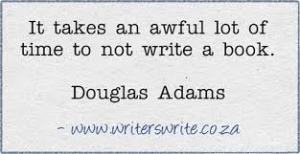Many new writers confuse editing with revision. Editing is one of the later stages and is focused on cleaning and polishing of your prose. During this stage you (try to) catch typos, misspellings, incorrect grammar, and ensure you have clean presentation (check formatting) and have carefully followed the guidelines for your submission. Editing is often completed by someone at the publishing house. But it should also be completed by the writer and is often possible in a single pass.
 Revision, on the other hand, comes a bit earlier in the writing process than editing. It is also completed in numerous passes and/or various attempts. During writing workshops when someone asks, “How many times do you revise?” I tell them it depends. I revise as many times as it takes to ensure it’s clear and the best prose I’m capable of writing at this point in my career. This is never what the participants want to hear but it’s a reality of the writing world. If you want to publish, this is what you do.
Revision, on the other hand, comes a bit earlier in the writing process than editing. It is also completed in numerous passes and/or various attempts. During writing workshops when someone asks, “How many times do you revise?” I tell them it depends. I revise as many times as it takes to ensure it’s clear and the best prose I’m capable of writing at this point in my career. This is never what the participants want to hear but it’s a reality of the writing world. If you want to publish, this is what you do.
It helps to think of revision as “rethinking” your story. Now that you have your draft–your story framework and basics–on paper, you can shape it, like clay; refine and rework it as you ask yourself questions about characterization, point of view, use of dialogue and detail. Perhaps you’ll even try a different approach in plotting or viewpoint for a scene or two. Revision is about refining but also developing and deepening the story so the reader has the best possible experience.
 Most writers break revision into section or passes. How you approach it is up to you; it depends on your creative approach. Some writers draft and then revise a bit, draft and then revise, but eventually, they reach a point where they are focused on reshaping and rethinking (rather than adding chapters and pages to the manuscript). I’m in the camp of getting a complete draft on paper and then playing around with the writing elements, expanding and deleting scenes, rethinking, shaping, looking at the draft with fresh eyes: re-visioning.
Most writers break revision into section or passes. How you approach it is up to you; it depends on your creative approach. Some writers draft and then revise a bit, draft and then revise, but eventually, they reach a point where they are focused on reshaping and rethinking (rather than adding chapters and pages to the manuscript). I’m in the camp of getting a complete draft on paper and then playing around with the writing elements, expanding and deleting scenes, rethinking, shaping, looking at the draft with fresh eyes: re-visioning.
REVISION CLASSES:
If you’re ready to learn more about “looking again” at your draft and revising, I have a revision class starting Wednesday, October 28 through ACE (Adult and Community Education) in Naples, Fla. Find details on my website workshops page.
